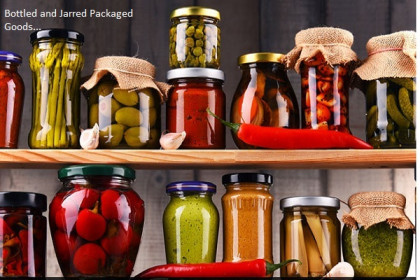Before we get into the meat of the piece, let’s get one thing straight in our heads: What is Bottled and Jarred Packaged Goods? People have been utilizing Bottled and Jarred Packaged Goods since ancient times, and history has not altered much, as people continue to use jarred packaging to keep diverse items such as jams, pickles, and other condiments. Household chemicals are also stored in glass containers.
History of Bottled and Jarred Packaged Goods
If you recall the preceding example, our forebears used glass jars to preserve pickles and other foods to keep them fresh for a long time. People are beginning to utilize plastic and canned items as a result of new technology, but old is always gold, and as a result, people appear to be showing greater interest in bottled and jarred packaged goods, and therefore the supply of such bottled packaged goods has swiftly expanded.
People are now much more concerned about their health, and they are aware that plastic is harmful to their health, therefore their focus has turned back to bottled and jarred packaged items. The rising demand for bottled and jarred packaged goods is becoming a point of contention. Some individuals believe it is healthful, while others believe it is harmful to the environment. Let’s look over the benefits and drawbacks of bottled and jarred packaged goods with Techy Gossips.
Pros of Bottled and Jarred Packaged Goods
Storage
Companies that can easily sell items will reap the benefits of bottled and jarred packaged foods. You may put your faith in the fact that items kept in such a prestigious box will be kept safe. Bottled and jarred packaged items are commonly employed to keep food products, and they have clearly proven to be beneficial.
Hygiene
Various meals products are hygienically transported and preserved from one place to another with the use of food packaging. Because there is no direct contact with the food items, proper packaging decreases the risk of bacterial infection such as food poisoning. Bottled and jarred packed goods are now considered safe. Packaging also allows you to keep food safe at home because you don’t have to leave food exposed to the environment because it’s bottled.
Duration
Packaging can also aid to extend the shelf life of many foods and drinks. Food will stay fresh for a long time if it is packaged in glass. This may be the second benefit of adopting bottled and jarred packaged foods, aside from sanitation and storage.
Let’s move on to the disadvantages of bottled and jarred packaged items after discussing the advantages of bottled and jarred packaged goods.
Cons of Bottled and Jarred Packaged Goods
When compared to unpackaged food, the expenses of packaging foodstuffs in jars and bottles are comparatively expensive. The most significant downside of these packing goods is that they are harmful to one’s health.
Artificial flavors and other food additives used to extend the shelf life of food goods are not only unpleasant to consume, but also harmful to the human body. Allergies, indigestion, and a number of other hazardous ailments, such as lung or heart disease, are only a few of the health dangers.
Environment
The majority of packaging will have a negative impact on the environment since it contains plastic that is full of chemicals and will have a significant impact on the reproductive system. The majority of the packaging is non-biodegradable, and it is detrimental to both humans and animals.
Cost
It would not be incorrect to suggest that packing raises the cost of packaged goods.
Bottled and jarred packed items appear to be highly costly to store and carry when compared to other packaging products.
Conclusion:
Finally, we’d like to point you that bottles and jarred items have both advantages and downsides. It has both bad and beneficial aspects, so you must decide whether to utilize such packing items extensively or to avoid them at all costs.
Bottled and Jarred Packaged Goods | FAQ’s
How to increase the lifespan of Bottled and Jarred Packaged Goods?
These are the techniques for extending the shelf life of packaged items.
• Put your product in the freezer
• Warm up your product
• The drying process
• Chemicals used
• Changing the Atmosphere of Your Products
• Irradiation of products
Are Bottled and Jarred Packaged Goods Harmful for the environment?
Because glass does not change the contents, does not oxidize, and does not emit dangerous chemicals, we may conclude that bottled and jarred items are less toxic than plastic ones.


















